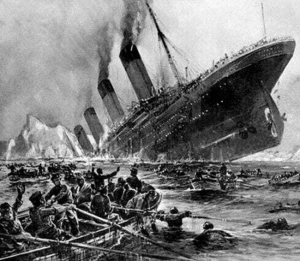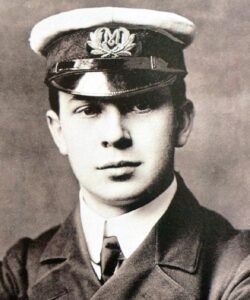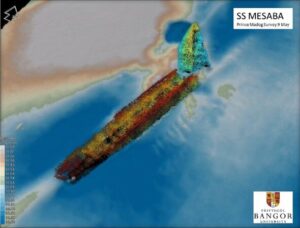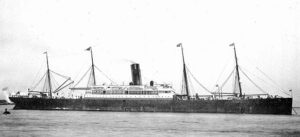
 The radioman had done his best. He tried to warn the radioman on RMS Titanic about the dangers lurking in the dark, moonless night…icebergs. Mistakenly believing that Titanic was unsinkable, 25-year-old John George “Jack” Phillips, a British sailor and the senior wireless operator aboard the Titanic during her ill-fated maiden voyage in April 1912, was too busy to listen or heed the warnings. So, the radioman on SS Mesaba turned off his radio and went to bed, making the ship unaware of the disaster the Titanic was experiencing after she hit an iceberg and began to sink. Many rules of the sea changed after that, and from then on, the radio had to be monitored 24/7…in case a disaster happened again. Sadly, safety laws come after disasters.
The radioman had done his best. He tried to warn the radioman on RMS Titanic about the dangers lurking in the dark, moonless night…icebergs. Mistakenly believing that Titanic was unsinkable, 25-year-old John George “Jack” Phillips, a British sailor and the senior wireless operator aboard the Titanic during her ill-fated maiden voyage in April 1912, was too busy to listen or heed the warnings. So, the radioman on SS Mesaba turned off his radio and went to bed, making the ship unaware of the disaster the Titanic was experiencing after she hit an iceberg and began to sink. Many rules of the sea changed after that, and from then on, the radio had to be monitored 24/7…in case a disaster happened again. Sadly, safety laws come after disasters.
So, what happened to the ship that tried to save the Titanic? I had never given that any thought, but now, more than 110 years after the Titanic sank after striking an iceberg, I read that SS Mesaba, the ship that sent warnings to the famous vessel has also been discovered on the ocean floor. Of course, this was not a surprise to those who found the ship, because they knew what had happened to the ship. Those who knew…researchers at Bournemouth University and Bangor University in Wales, sent a team, using multibeam sonar to find the now famed “ship that tried” to save Titanic.
What I didn’t know, until now, was that just six years after the sinking of RMS Titanic, the SS Mesaba was sunk in the Irish Sea during World War I. Mesaba was making a convoy voyage from Liverpool to Philadelphia on September 1, 1918, when a German U-boat’s torpedo took out the merchant ship, killing twenty people. Titanic was finally found in 1985, but the “ship that tried” to save her, took more than 100 years to locate. Possibly it was because of all the new technology we have, including sonar, which “uses sound waves to measure the distance between a sound source and various objects in its surroundings. This kind of method can be used for navigation, communication, and mapping. It is also frequently used by underwater vessels.” The Bangor researchers used active sonar to map the seabed, and also identified the Mesaba wreckage by emitting pulses of sounds and listening for echoes. Innes McCartney, who is a researcher with Bangor, says the multibeam sonar is a “game-changer” for marine technology. Finally, SS Mesaba’s final resting place is known, although 
 that doesn’t change anything for the ship. After all these years of wondering, the ship will stay right where it is, although it may be explored now and any valuables can be removed by the team, who was the first to locate, and is therefore eligible to salvage if they choose to.
that doesn’t change anything for the ship. After all these years of wondering, the ship will stay right where it is, although it may be explored now and any valuables can be removed by the team, who was the first to locate, and is therefore eligible to salvage if they choose to.


Leave a Reply